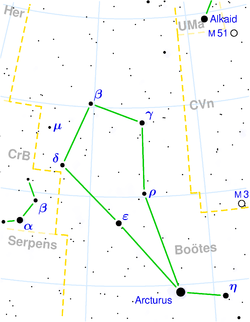Despite a pre-weekend forecast for thunderstorms, Saturday stubbornly stayed humid (to the point of Midwestern Mugginess), windy (gotta love that Gulf air from the south) and sunny (well, more hazy than clear, but not really overcast). After walking Apollo shortly after sunrise, I resolved to remain indoors and further test my new central air conditioner. I wiled away the day with housework, reading and movies (three of them, or was it four?).
I finished watching Centurion via Netflix streaming (aka Watch Instantly) around nine o’clock. I relinquished the remote to my husband so he could watch either UFC or F1 and headed north to my Dad’s house for some moon and Saturn observing.
I left the Meade ETX-90 with him last week to see if it needed a tune-up for it’s drive mechanism. I found some helpful websites and he did crack open the case to confirm everything looked in good shape (nothing obviously broken or breaking). So, tonight’s experiment involved attempting an accurate polar (or equatorial) mounting of the ETX on the field tripod. Before the sun set, he had leveled and oriented the telescope per the instructions for the telescope, tripod and Autostar computer controller.

I arrived to a darker sky with less haze than I observed last week. The moon had about a third of a crescent. Dad had the telescope tracking the moon (for several minutes) so I enjoyed reviewing the craters visible along the terminator. Absolutely stunning! I really should have grabbed the digital camera out of my car and snapped a few photos.
Somehow, we disrupted the Autostar and lost the date/time and tracking as we fumbled in the dark. We spent some time realigning the telescope using the Easy align feature of the Autostar, first confirming and centering the telescope in the ‘home’ position with Polaris visible through the eyepiece. Unfortunately, the stock viewfinder that came with the ETX-90 is unusable in the polar mount ‘home’ position because the telescope is 90 degrees to the base. You can’t get your head between the end of the telescope and the top of the drive mechanism! I have a remedy for this coming soon. On Friday I ordered a red dot finderscope from Celestron that I hope will eliminate this problem.

The first star on the alignment procedure was Arcturus (in the constellation Bootes), easily found in the northeastern-eastern sky by following the arc of the Big Dipper, and the brightest star in the northern hemisphere and fourth brightest star in the night sky (only Sirius appeared brighter last night in the southeastern night sky). The second stop on the alignment tour asked for Capella. I used the Field Guide to the Stars and Planets that I checked out from the Kansas City Public Library last week for a star chart containing that star. I learned that Capella is one of the brighter stars in the constellation Auriga (and later at home I learned Capella is also the sixth brightest star in the night sky and third brightest in the northern celestial hemisphere.

Even though Capella is bright, with the moon in the same region of the sky, with increasing haziness and wind, I could only see with my naked eye one other star in Auriga — the beta star in that constellation. I hesitantly told dad, who was steering the telescope with the Autostar and the viewfinder, that the right-most bright star above the moon was probably Capella. He centered it and we were ‘aligned’ again. Then we told the Autostar to ‘go to’ Saturn. The ETX got close, or close enough for us to find it through the light pollution (courtesy of the southeast sky and Leavenworth, Lansing and Kansas City), the increasing haziness and the tree limbs of the tall trees along the eastern edge of dad’s property.
 We observed Saturn for fifteen or twenty minutes, trying various eyepieces and barlows. I had forgotten to check before leaving my laptop the location of Titan in relation to Saturn so I can’t confirm or deny whether I actually saw the moon Titan. What amazed me about this observation period was the ability to continue to observe Saturn through the telescope, even through tree limbs and clouds! I often couldn’t find Saturn with my naked eye, yet the telescope tracked it nearly flawlessly (so long as I didn’t use too high a magnification eyepiece).
We observed Saturn for fifteen or twenty minutes, trying various eyepieces and barlows. I had forgotten to check before leaving my laptop the location of Titan in relation to Saturn so I can’t confirm or deny whether I actually saw the moon Titan. What amazed me about this observation period was the ability to continue to observe Saturn through the telescope, even through tree limbs and clouds! I often couldn’t find Saturn with my naked eye, yet the telescope tracked it nearly flawlessly (so long as I didn’t use too high a magnification eyepiece).
We packed up the telescope once we could no longer see any stars with our eyes. Even the moon was shrouded in haze and thin clouds.
Once I returned home, I re-researched polar mounting the ETX on the field tripod. My dad had read and thought the latitude adjust on the tripod meant you had to subtract your current latitude from 90 degrees. So, instead of setting the adjustment equal to our latitude (of 39 degrees), we tried setting it to 51 degrees. I did notice that when the telescope attempted to find Arcturus, it was pointed northeast but down below Arcturus by quite a bit. So, I re-read the field tripod’s user manual (via PDF from Meade’s web site) when I got home and confirmed that you set the tripod to your actual latitude, no math necessary. We’ll just have to try it again later. We also plan to re-train the drives in the ETX-90 per instructions in the Autostar manual.
